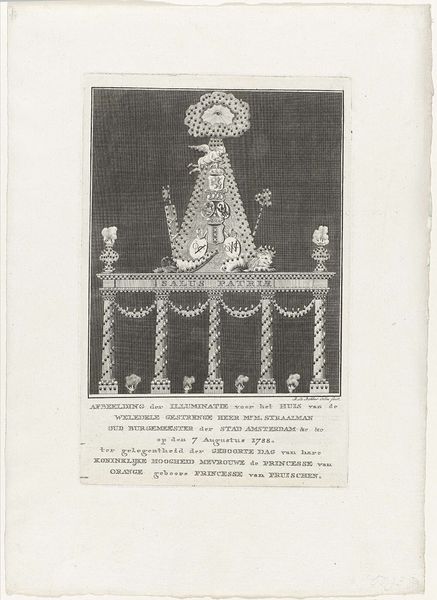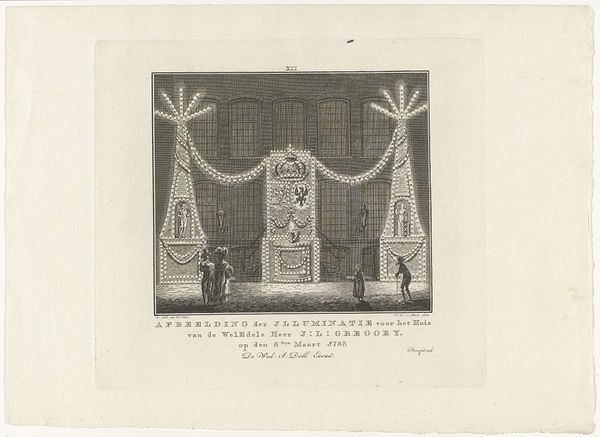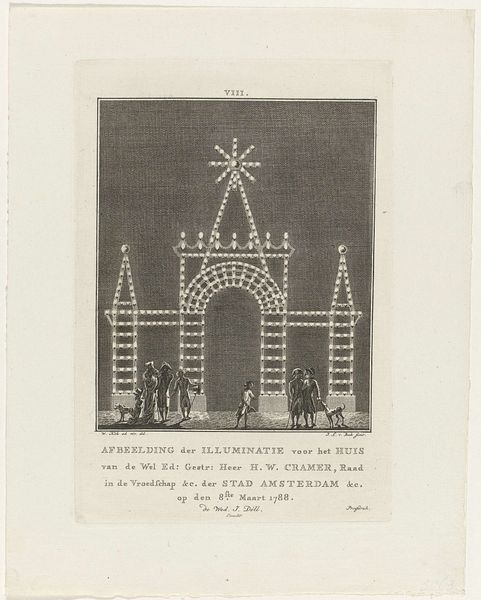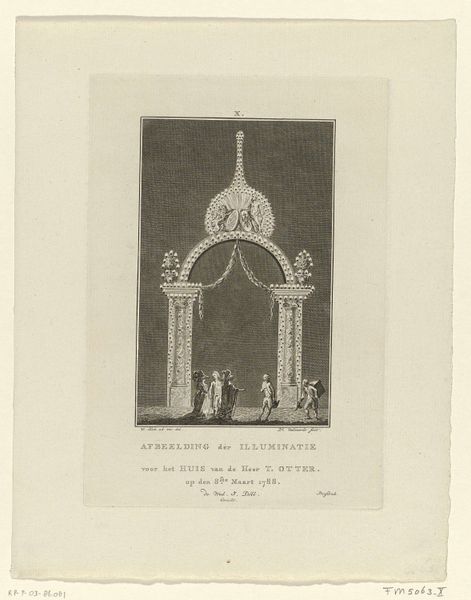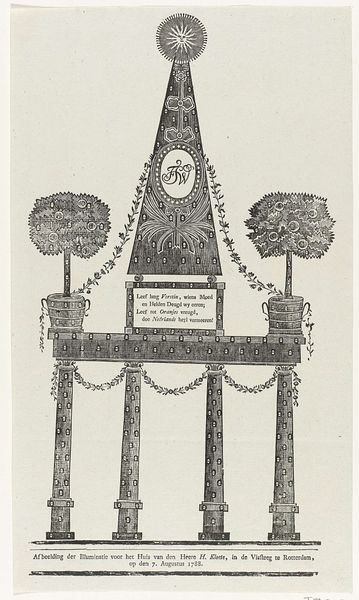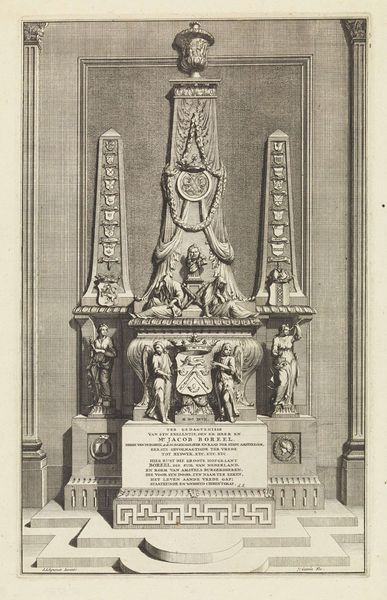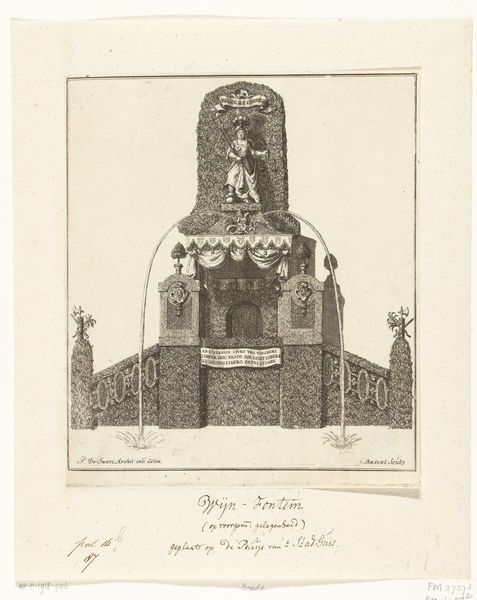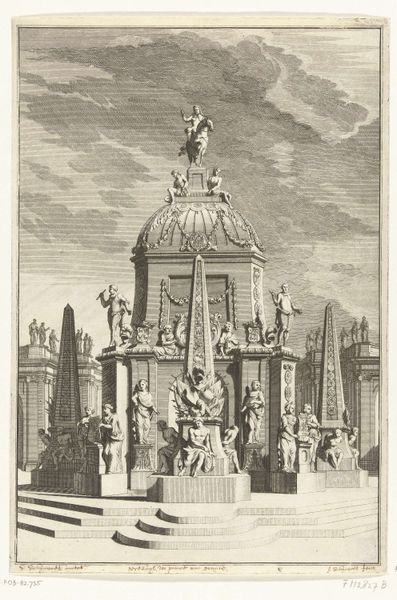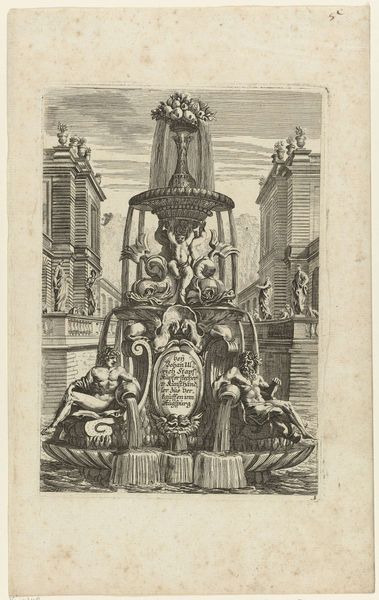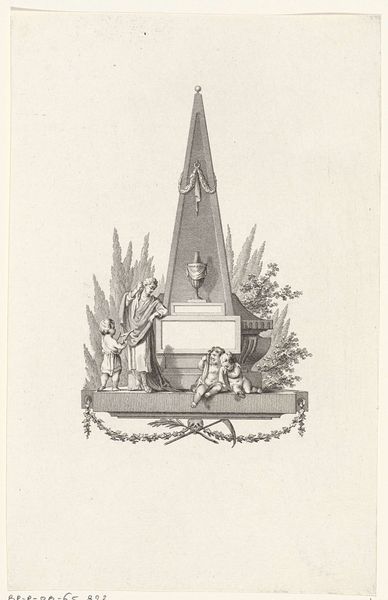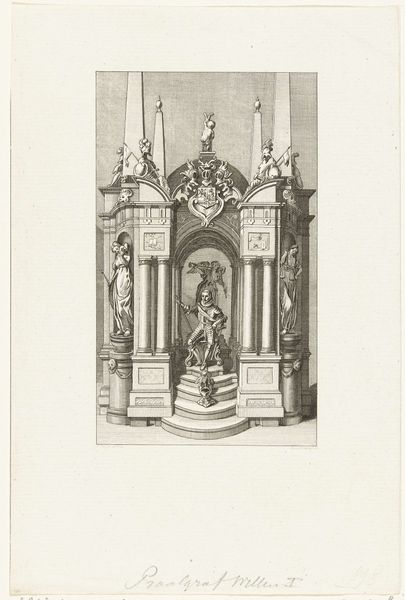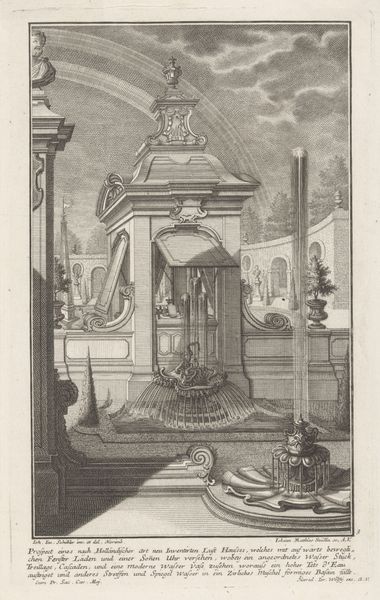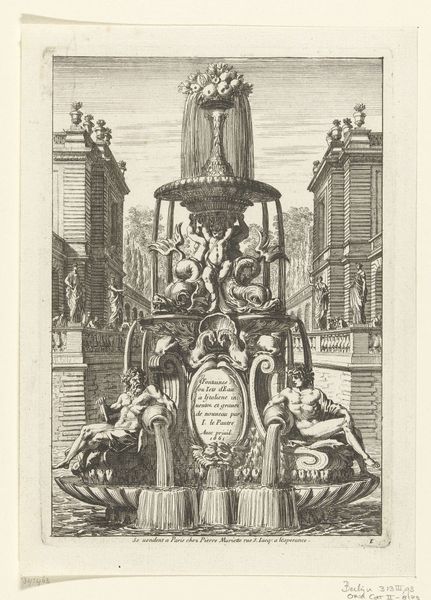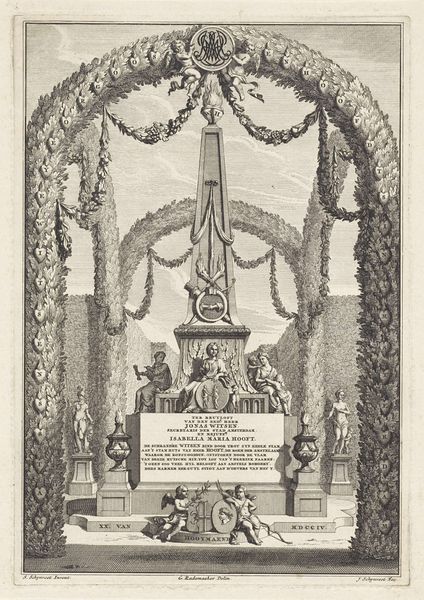
Illuminatie voor het huis van mr. W.C. Backer te Amsterdam, 1788 1788
0:00
0:00
drawing, print, engraving, architecture
#
drawing
#
neoclacissism
# print
#
landscape
#
geometric
#
engraving
#
architecture
Dimensions: height 210 mm, width 210 mm
Copyright: Rijks Museum: Open Domain
Curator: Daniël (I) Veelwaard created this print, "Illuminatie voor het huis van mr. W.C. Backer te Amsterdam, 1788," using engraving and other drawing techniques. It's a fascinating glimpse into 18th-century Dutch society. Editor: My initial reaction is one of restrained elegance. The stark black and white contrast emphasizes the geometric precision of the architectural forms. There’s a formality to the whole scene. Curator: Indeed. It's neoclassical in style, reflecting the Enlightenment's emphasis on reason and order. The print commemorates an illumination, a public display of lights, held at the home of Mr. W.C. Backer. We must ask why his residence merited such honor, what role he played within the socio-political framework. Editor: Focusing on the visual, I'm drawn to the symmetrical composition. The central obelisk, flanked by the two elaborate columns, creates a strong focal point. The artist has skillfully used light and shadow to give depth to the otherwise flat medium. Curator: Consider, though, that illuminations served as political statements, celebrations of power, and declarations of allegiance. Knowing Mr. Backer held the post of head officer reinforces the theory that such a celebration underscored societal hierarchies of the period, not always reflecting a society without biases in civic engagement. Editor: Certainly. And the eye is immediately led upward by that imposing verticality. From the ornate base, to the crowning star motif, everything is designed to elevate and impress. Semiotically, these choices are potent, visually signaling authority. Curator: And whose authority? What of those excluded from this spectacle? The print, in its celebration, perhaps inadvertently highlights the limitations of civic life in the Dutch Republic. It gives the impression that access and privilege remain with a select class of people. Editor: Regardless of these complex implications, as a visual statement the drawing compels reflection on what is selected for visual emphasis. I was going to add something less polemical but it seems it needs the additional thought given to this period of revolution and evolving democracies. Curator: Precisely. A deeper look requires that additional thought, as the revolution reminds us, there's much more here than first meets the eye. We all have more research to conduct on it!
Comments
No comments
Be the first to comment and join the conversation on the ultimate creative platform.
